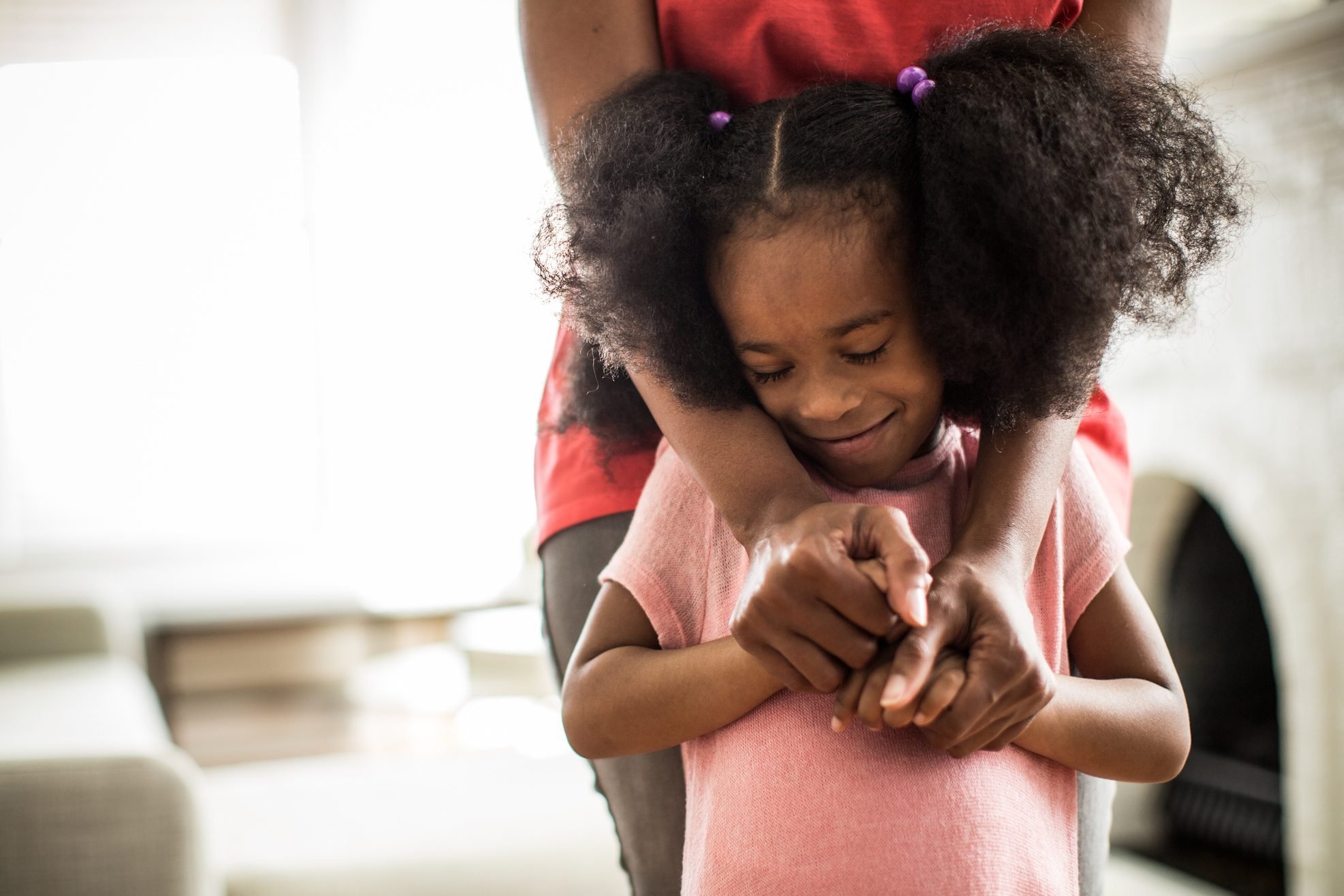16 Things to Know About Attachment Theory
Updated: Mar. 08, 2022
Attachment theory can tell you a lot about how you connect in relationships. Here's what to know about secure, anxious, avoidant, and disorganized attachment styles. Plus, find out what therapists think about this theory.
Our editors and experts handpick every product we feature. We may earn a commission from your purchases.
What is attachment theory?
Saying someone has “mommy issues” or “daddy issues” is at best limiting and at worst offensive, but these phrases point to a tiny nugget of truth. Early relationships with caregivers or parents affect adult relationships with intimate or romantic partners. This is the idea behind attachment theory.
The theory connects these early relationships and adult relationships.
“According to the theory, the way we bonded with the significant attachment figures [aka our parents] in early life shapes and predicts how we will bond in our later relationships, especially with our romantic partners,” says licensed mental health counselor Denise Fournier, an adjunct psychology professor at Nova Southeastern University in Florida.
Attachment itself is only one part of the relationship between a child and a parent or caregiver. But it’s a biggie. This emotional bond makes a child feel safe, secure, and protected. This bond ensures the helpless child has their primary needs met.
Your attachment style may determine how you relate to your partner and could affect how you behave in relationships, too. So knowing your attachment style can help you understand behaviors that come up in relationships.
Note that while attachment theory is one thing that contributes to how people behave in relationships, there are several other independent factors like trauma and mental illness, too.
Here’s what you need to know about this theory and how recognizing your attachment pattern could help.
Attachment theory isn’t new
The theory dates back to the 1950s and the work of British child psychologist John Bowlby.
His colleague, psychologist Mary Ainsworth, studied this theory in the 1970s and developed an assessment called “the strange situation.”
In the series of short tests, researchers observe how a 9- to 18-month old child reacts to an unfamiliar environment and the presence of a stranger, both with and without their mother in the room.
Based on their reactions, the researchers identified different types of attachment to a parent, including secure, ambivalent, and avoidant.
Years later, researchers Mary Main and J. Solomon found a fourth style: disorganized. And Cindy Hazan and Philip Shaver made a connection between these attachment patterns and adult romantic relationships. Since then, research on attachment style continues to progress.
The Diagnostic and Statistical Manual of Mental Disorders (DSM-5), the official list of recognized psychiatric disorders, includes two attachment disorders in children: reactive attachment disorder and disinhibited social engagement disorder.
The manual does not include the attachment theory patterns as a formal diagnosis for adults and their relationships.
Types of attachment patterns
The original attachment theory outlines several attachment patterns in children. According to Fournier, the ones most commonly used today are:
- Secure
- Ambivalent
- Avoidant
- Disorganized
Other researchers have slightly different names or variations of the attachment styles when applied to adult relationships (more on those below).
And, yes, you can associate with more than one attachment style or pattern. Although the categories are clearly defined, they aren’t rigid.
“As a therapist, I commonly work with people who identify with traits associated with both the anxious and avoidant types,” Fournier says. “And many people find that their attachment style differs according to the style of the person with whom they’re in a relationship.”
Paul Hokemeyer, a clinical and consulting psychotherapist in New York and author of Fragile Power: Why Having Everything Is Never Enough, adds that these types exist on a spectrum from mild to severe, and people can have features from multiple different types. Here are the attachment style patterns you should know.
Secure attachment style
If you identify with a secure attachment style, your parents or caregivers were highly attentive and supportive.
“These children were able to reach out to responsive and nurturing parents when they became frighted or distressed,” Hokemeyer says.
Learning to trust their parent creates a sense of security and safety in the world, and that helps them form a bond, according to Jane Greer, a marriage and family therapist in New York City, author of What About Me.
How a secure attachment style affects adult relationships
“As adults, these individuals have high self-esteem, enjoy long-lasting relationships, and are able to seek out social support systems when distressed,” Hokemeyer says. People with a secure attachment style can withstand the ups and downs of a relationship without showing avoidant or anxious behaviors.
Stephanie Newman, a clinical psychologist in New York City and author of Barbarians at the PTA, adds that a securely attached adult might not be scared to be alone or might be pretty comfortable with arguing. That’s because that they have a sense that the world is safe and predictable, and that people are reliable and consistent.
Securely attached people have low anxiety and avoidance, and high trust in themselves and others. They don’t live in fear that the person they’re in a relationship with will leave.
A 2017 study in Frontiers in Psychology also notes that securely attached children are more empathetic during later childhood stages. Plus, they are less disruptive, less aggressive, and more mature than children with ambivalent or avoidant attachment styles.
Almost 60 percent of people are thought to have a secure attachment style and do not have trouble forming and maintaining relationships. The other 40 percent of people have one of the other three attachment styles, which are all considered “insecure.”
Ambivalent attachment style
Those with an ambivalent attachment style dealt with an unpredictable or unavailable parent or caregiver as a baby. As kids, they may be suspicious of strangers and feel distress when their parents leave due to the lack of consistency.
People may also refer to an ambivalent attachment style as an anxious or preoccupied attachment style.
How an ambivalent attachment style affects adult relationships
Greer says anxiously attached adults err on the side of “clingy” or “needy” in partnerships to have their needs met. “They are going to have anxiety when their partner is not around, and they’re going to have to stay in touch in order to feel secure,” Greer says. They likely require constant reassurance.
Only 7 to 15 percent of Americans display an ambivalent attachment style, according to a review in the journal Child Development. (Here’s how to deal with anxiety in relationships.)
Avoidant attachment style
People with an avoidant attachment style overtly reject relationships. “Typically, they had a physically or emotionally abusive caregiver,” Hokemeyer says.
This is sometimes called a dismissive-avoidant attachment style.
How an avoidant attachment style affects adult relationships
Newman says people with this attachment style didn’t learn to rely on others when they were growing up. “As adults, they have a hard time being emotionally intimate or showing any vulnerability,” Hokemeyer says.
If you have this attachment style, you may believe that people are dangerous and cause harm. Chances are, you have low trust in others and higher belief in yourself.
Greer says people with this attachment type may avoid attaching to a person to protect themselves from the disappointment or fear of abandonment. This can lead to issues with intimacy and an unwillingness to share feelings or invest in relationships.
Disorganized attachment style
Children with a disorganized attachment style had inconsistent caregivers, according to Hokemeyer. “At times, these caregivers would be highly attentive and nurturing and then at others be completely absent or rejecting,” he says. “The message these individualized internalized was one of confusion.”
This is also known as a fearful-avoidant attachment style.
How a disorganized attachment style affects adult relationships
There’s no continuity or consistency in how people with a disorganized attachment style connect with others. Their behaviors, actions, and responses as adults may be a mix of avoidant and anxious attachment styles. They may have conflicting feelings about relationships and intimacy.
People who identify with this attachment style go between a sense of self-worth and worthlessness and often feel ungrounded in a world that swirls chaotically around them. They typically do not trust themselves or others.
(Here’s how to build trust in a relationship.)

Recognize attachment patterns
Understanding attachment styles helps us recognize our patterns of relating to other people, especially in the context of our romantic relationships, according to Fournier.
“A lot of people, when they learn about attachment theory and identify their attachment style, are able to make sense of why their previous romantic relationships didn’t work out or why they tend to go for the same type of partner over and over again,” she says.
Taking advantage of your attachment style isn’t so much about breaking patterns as it is about mindfully adjusting and evolving them. “To do this, we have to first understand our default attachment style and what kinds of thought and behavior patterns go along with it,” Fournier says. “With that understanding, we can then make adjustments to our behavior and manage ourselves in a different way, as well as make different choices in dating and relationships.”
Gain self-awareness
Identifying your attachment style can increase self-awareness. And this can help you take responsibility for your choices and actions in a healthy and empowering way.
“Knowing your predisposition in relationships can help you make wiser, more informed choices that yield better outcomes for you and your future partners,” Fournier says. “For couples, it can be helpful for you and your partner to understand your own attachment styles and how they might differ from one another so that you can promote healthy patterns of communication and interaction in your relationship.”
When you’re aware of your attachment style, you can make intentional decisions about romantic partners. “If you really like somebody and you’re avoidant, and they text you ‘I had a great time’ after a date, you might say to yourself, ‘I’m actually gonna write back, and I’m not going to ignore that message because I really like this guy and I wanna get to know him,'” Greer says.
Understand how the past impacts the present
Learning about attachment theory and patterns reveals that part of your current sense of self is grounded in the past—a past you’re not responsible for. But you have the power to change.
“For people who don’t understand why they act the way they do in relationships or why they view themselves and the world through an anxious or depressive lens, this knowledge is transformative,” Hokemeyer says. “It enables them to start on a reparative journey to open up their world to new and more rewarding experiences.”
Through this process, people see that they are not flawed human beings. Rather, they realize the flaws in what they learned about creating and sustaining valuable relationships. (Are you self-sabotaging relationships? Here’s what to do.)
Attachment theory and therapy
Experts consider attachment theory a useful tool in some therapy situations. Hokemeyer finds attachment theory incredibly valuable in assisting his patients in breaking unhealthy patterns of relating to their selves and others.
“Central to its value is putting their behaviors and feelings in a context,” he says. Once you’ve done that, you can use other therapy tools that help alter negative behaviors and feelings.
The point of identifying our attachment styles is to figure out what doesn’t work for us—and what does. “The goal of this identification is to reacquaint ourselves with hope and embark on a journey of healing,” Hokemeyer says.
(Here’s what to know about cognitive behavioral therapy.)
Limitations of attachment theory
As with any theory or system of categorization, there are always limitations to how much it can accurately define human nature.
And, at the end of the day, our attachment style is based on a guess. After all, we can’t really know how attached we felt at 9 months, says Newman. Likewise, it’s not possible to ask a baby how attached they feel.
“While the theory does tell us a lot, it doesn’t tell us everything,” Fournier says. “It’s important that we think flexibly and use the information in ways that promote relationship health and mental health.”
Don’t box yourself in
Sure, knowing your attachment style can lead to deeper self-awareness and more mindful choices and behaviors in relationships. But take this information with a grain of salt.
“There’s no need to overly focus on the labels or categories of attachment theory. Putting yourself in a box won’t be very helpful,” Fournier says. “I recommend learning about attachment styles in general, getting familiar with your particular style, and using that information—like you would any other information about yourself—to grow and evolve in ways that are more aligned with who you want to be and how you want to relate to others.”
“The biggest pitfall of attachment theory is that it can be interpreted to be a predictive set of facts that leads people to self-identify in self-limiting ways,” Fournier says. For example, you might falsely think, “I’m too much of an anxious type to ever be comfortable in a relationship. I’m doomed to be rejected and alone forever.”
Others may use attachment theory patterns as a way to demean or condemn others—like calling someone a “typical avoidant.”
Attachment theory doesn’t explain your whole personality
When it comes to your personality, attachment theory isn’t the be-all and end-all. As Newman points out, other types of development determine personality and impact relationships, too.
“There are other kinds of development, like identity and psychosexual development,” she says. “And there are so many other kinds of development in an individual.”
Attachment theory is just one piece of how people relate in life. It’s great for explaining behavior, but the theory isn’t complete. “It won’t explain anything other than attachment style and relationships,” Newman says.
(Here’s what your fears say about your personality.)
Look at both the past and the present
“You have to look in the here and now to see what you’re doing or not doing in a relationship,” Greer says. Take an inventory of how you’re currently behaving, then think back on your childhood. From there, consider attachment patterns.
“By looking to how you’re behaving now and what you experienced in your past, it can help illuminate the quality of your relationships and the way in which you involve yourself with people,” Greer says.
Some experts believe you can change your pattern
Therapists disagree on whether your attachment pattern is something that you can (or should) try to change or break. According to Hokemeyer, attachment styles that aren’t enabling people to grow and thrive can be broken so new, healthier ones can be internalized in their place.
But Greer says this sets people up with an impossible task. “This is who they are,” she says.
She likens our personalities to cake. Once it’s out of the oven, you can add decorations or frosting. But underneath it all, you can’t mold it into another shape or make yellow cake chocolate. As an adult, there’s only so much you can do, say, or change about things that happened at such a young age.
“You don’t want people to think they have to change this pattern,” she says. “But they can work with it. And they can modify it and make choices about how they behave once they understand the needs that drive this pattern.”
The bottom line
Attachment theory is an interesting way to look at how early experiences shape adults. Just don’t get too attached (pun intended) to the labels. Remember, this is only one piece of the puzzle when it comes to understanding why we do what we do.
Discussing this theory and your attachment style with a therapist could help you learn more about yourself and possibly improve your relationships.
Next, check out this guide to healthy relationships.




















